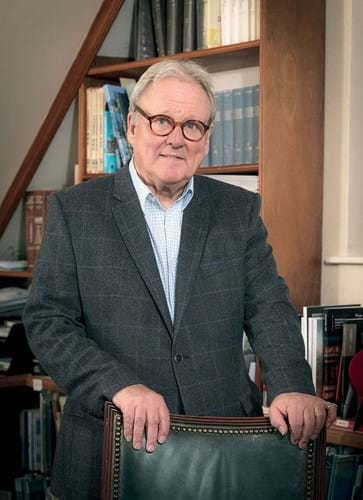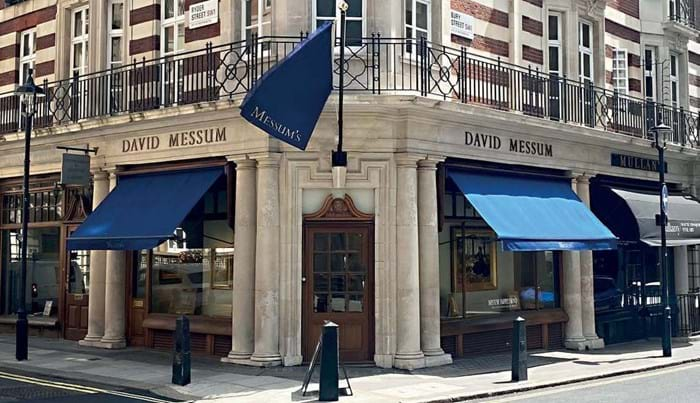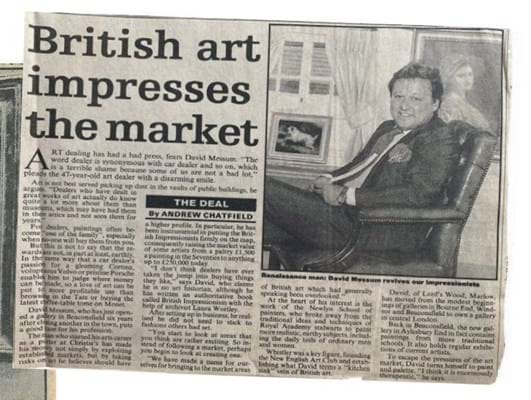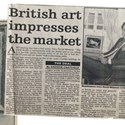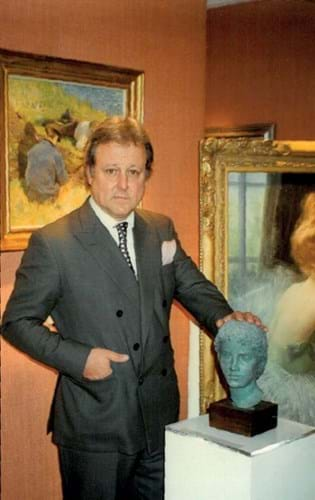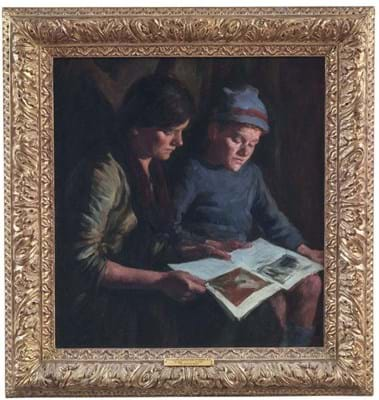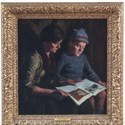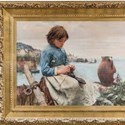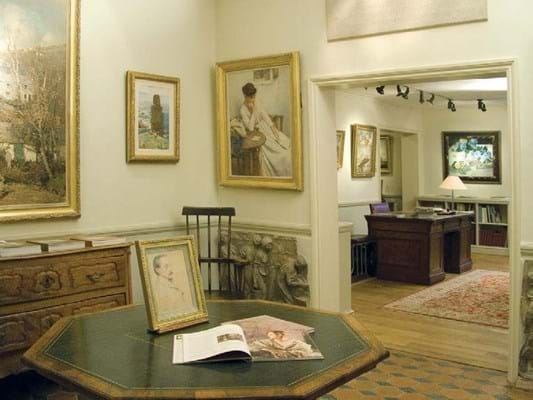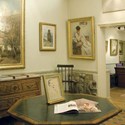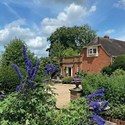“It’s not so much a business but a way of life,” says David Messum as he reflects on his six decades as an art dealer. “You need to enjoy it and enjoy looking at good pictures.”
Indeed, few dealers have had such a long and exceptional career as Messum.
Now marking 60 years since he launched his first gallery, this summer he is holding a major exhibition of British paintings across his two galleries in London and Marlow.
With more than 100 works of art, all for sale, it is a show that reflects his great interest over the years in particular areas of the market: from avant-garde artists of the late 19th century to later artists who helped develop Modernism in the 20th century, including Staithes and Newlyn School artists, as well as founder members of the highly influential New English Art Club.
Running through the show is a strong focus on British Impressionist paintings, a sector which Messum was instrumental in putting on the map.
With the exhibition running from June 7 to July 28, here he speaks about some of artists featured in the show as well as looking back at his career and explaining why he still loves to paint himself.
ATG: How did you get started in the art business?
David Messum: Art has always inspired me. At the age of 17, I went directly from school to Christie’s where I had a meeting with Ivan Oswald Chance (Christie’s chairman at that time) who said there were no vacancies in the office, but that he could give me a job as a porter.
I worked under the head porter, Jim Taylor, who was a former sergeant major and an extraordinary character who became a good friend. I fell in love with the business. At the time I liked furniture as well as pictures which, of course, later became my speciality.
After a year as a porter, I was given a job at Christie’s front counter which was a good first experience in dealing with clients.
Where did you go next?
My next move was to become a picture specialist at Bonhams, working in the Montpelier Street galleries. I was the second in charge… of two!
It was a fantastic grounding when I look back. I was handling and cataloguing over 300 pictures a week and negotiating with clients to fix reserves and estimates, which was actually a very good way to learn about dealing.
From time to time, I even had to negotiate with my colleagues in the furniture department - who could be an even harder bunch!
I remember once we had an enormous painting by Rubens - about 8 x 12ft - and I had difficulties getting them to help me move it. It eventually ended up getting stuck on the 4th floor landing for several months before selling for about £45,000 in Bonhams’ Montpelier rooms. It then ended up appearing in a Sotheby’s Parke-Bernet auction in New York and making around 10 times that level.
How did you set up your first gallery?
After a few years at Bonhams, one dealer who I’d got to know mentioned they were vacating a gallery in Bourne End in Buckinghamshire. It was near to where I lived in Marlow and had great storage at the back for pictures.
I wanted to start dealing so I took it on, and it proved a great decision. Back then (in 1963) you could buy lots of good quality British pictures relatively cheaply.
Newlyn School artists, for example, had largely fallen off the radar and were not expensive, and I wanted to bring them back to light.
From my early days as a dealer, I was always drawn to these painterly plein air pictures. Before long I had more works by Stanhope Forbes than I knew what to do with!
Tell us about the other galleries you set up
In 1968 I moved to nearby Beaconsfield where I ran a gallery for over 25 years. In the autumn of 1974, I held an exhibition there titled A Breath of Fresh Air, the first in a long line of annual exhibitions showcasing British Impressionism and Newlyn School paintings.
I also had a gallery in Windsor for a while and then, in 1974, took on the house and studio at Lord’s Wood in Marlow. The house was built by the artist Mary Sargant Florence, which had once been a summer retreat for members of the Bloomsbury Group. It has been my home ever since.
Next came London. Our first gallery in the capital was on Bury Street, next door to where we are now.
In 1988 we moved to the heart of Mayfair at 34, St George Street, directly behind Sotheby’s, opening with a major exhibition of works by Dame Laura Knight. This was followed by the opening of a second space in London on Duke Street, St James’s, and then Cork Street until 2020, when I opened our current London gallery at 12 Bury Street.
How did you get interested in Newlyn pictures and British Impressionism?
I’ve always liked realist paintings, especially ones with humble subjects that enshrine outdoor life. That’s what got me interested in Newlyn pictures in the early 1970s.
These artists broke away from the traditional ideas and techniques of Royal Academy stalwarts and painted more realistic, earthy subjects including the daily toil of ordinary men and women.
I think the light is also key to these pictures - that’s really the reason that they set up these artist colonies in the south-west in the first place. This is why I titled my first British Impressionist exhibition A Breath of Fresh Air - I still feel that’s the attraction for me.
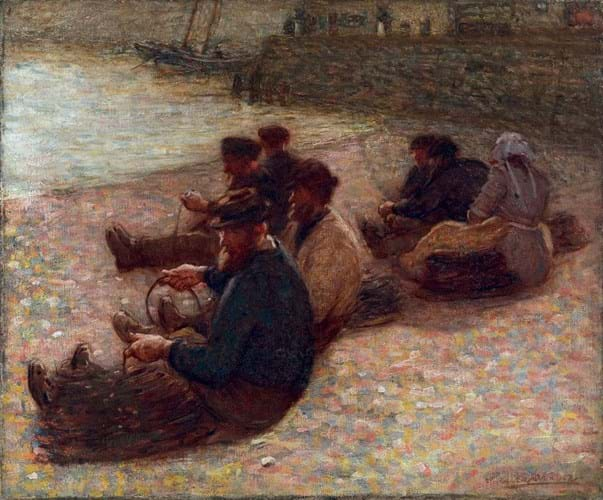
Five works by Dame Laura Knight (1877-1970) feature at Messum’s summer exhibition. Baiting Lines, Staithes, an 18¼ x 22in (47 x 56cm) oil on canvas, was an early work depicting fisherfolk in the North Yorkshire village and it is thought that it could date from as early as 1898. It is priced at £48,500.
The whole field of British Impressionism seemed a bit untapped, so I published my first book on the subject in 1985 with Laura Wortley (the then archivist at Messum’s). It was really the first major text on the subject and was well received despite, when it came out, some critics saying the subject was an oxymoron.
However, nowadays the term ‘British Impressionism’ is widely accepted and there are even rooms at Tate Britain devoted to it.
What other books have you produced?
The publishing arm of Messum’s is an important part of our operations. Along with our specialist libraries, Studio Publications is based at our Studio at Lord’s Wood.
It’s where we undertake much of the research into artworks as well as the numerous artists’ estates that we’ve come to represent.
One of these is the famed equine artist, Lucy Kemp-Welch (1869-1958). We have held her estate since 1972 and have published three books on her life and work.
The most recent biography, written by David Boyd Haycock, has just come out and is available from our gallery, along with hundreds of other books we’ve helped published over the years (see messums.com/publications/listings).
Are artists’ estates important to the gallery?
Yes, absolutely. I’ve always specialised in handling artists’ estates, and we now represent around 20. One of the biggest and most extraordinary is that of Wilfrid Gabriel de Glehn (1870-1951), which was initially valued for probate at £100,000 shortly before we took it on. Over the three decades we have represented the estate, sales have exceeded £20m.
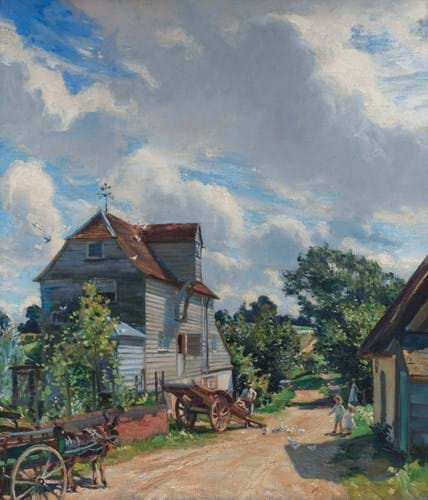
One of the artists’ estates that Messum has helped disperse is that of Wilfrid Gabriel de Glehn (1870-1951). A leading exponent of British Impressionism, the current exhibition includes seven pictures by him. Overshot Mill, a 3ft 8in x 3ft 2in (1.12m x 97cm) oil on canvas from c.1920, depicts his sister Rachel’s home at Colne Engaine on the border of Essex and Suffolk, where the artist was a regular visitor. It is priced at £85,000.
What would you say is needed to be a successful dealer?
It’s important to remain on the ‘front line’ - it’s something I’ve always tried to do, as well as encourage in my staff at the gallery, whether in developing artists’ estates as part of our business, or establishing the staple of Contemporary artists that we work with.
Keep discovering and acquiring knowledge, maintain an open mind, and commit to your individual vision. Remember to stick to what you like. It is important to develop an eye for something that you think is good.
I’d also say having a sense of humour is important too.
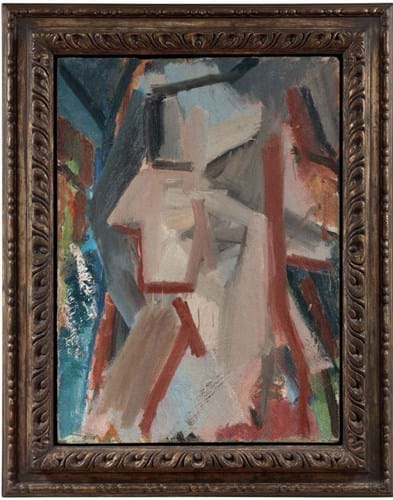
Demonstrating the influence of David Bomberg, this 3ft 8in x 4ft 8in (76 x 56cm) oil on board titled Borough Portrait Study is the work of Miles Richmond (1922-2008), another artist whose estate is represented by Messum’s. Dating from 1948, it is priced at £16,500.
Is it harder to become a dealer these days?
It’s worth saying that it’s not always easy to make money in this business, especially with all the costs nowadays – huge premiums at auction and Artist’s Resale Right for example, as well as the price of producing exhibitions going up.
While it’s tough to be dealer starting out today, there are certainly more opportunities now to deal from home. You don’t have to start out at a bigger firm or a high street property like I did.
The internet has inevitably changed a lot of parameters in the art business. However, I’m old fashioned and like to look at a picture first - handling goods is always better than viewing online in my view.
What are the biggest changes in the art market you’ve noticed over your career?
Certainly the salerooms are much more powerful now. They are effectively marketeers who buy and sell rather than act solely as traditional auctioneers working for the vendor. In terms of demand, the 19th century picture market seems to have softened somewhat and many fine paintings from this period are not expensive today.
Over my time, I’ve noticed how certain markets shoot up quickly while others seem to fall away just as quickly. Impressionism, though, seems to be never out of fashion.
Do you paint yourself?
Yes, I call myself a ‘patio painter’. When I go on holiday in Corfu, I like to sit on the terrace with paintbrush in one hand and a G&T in the other! It’s an exercise in observation; I like watching the changes to the landscape as the sun moves across the sky.
As an exercise, it gives you closer understanding of light and how difficult it really is to paint well.


